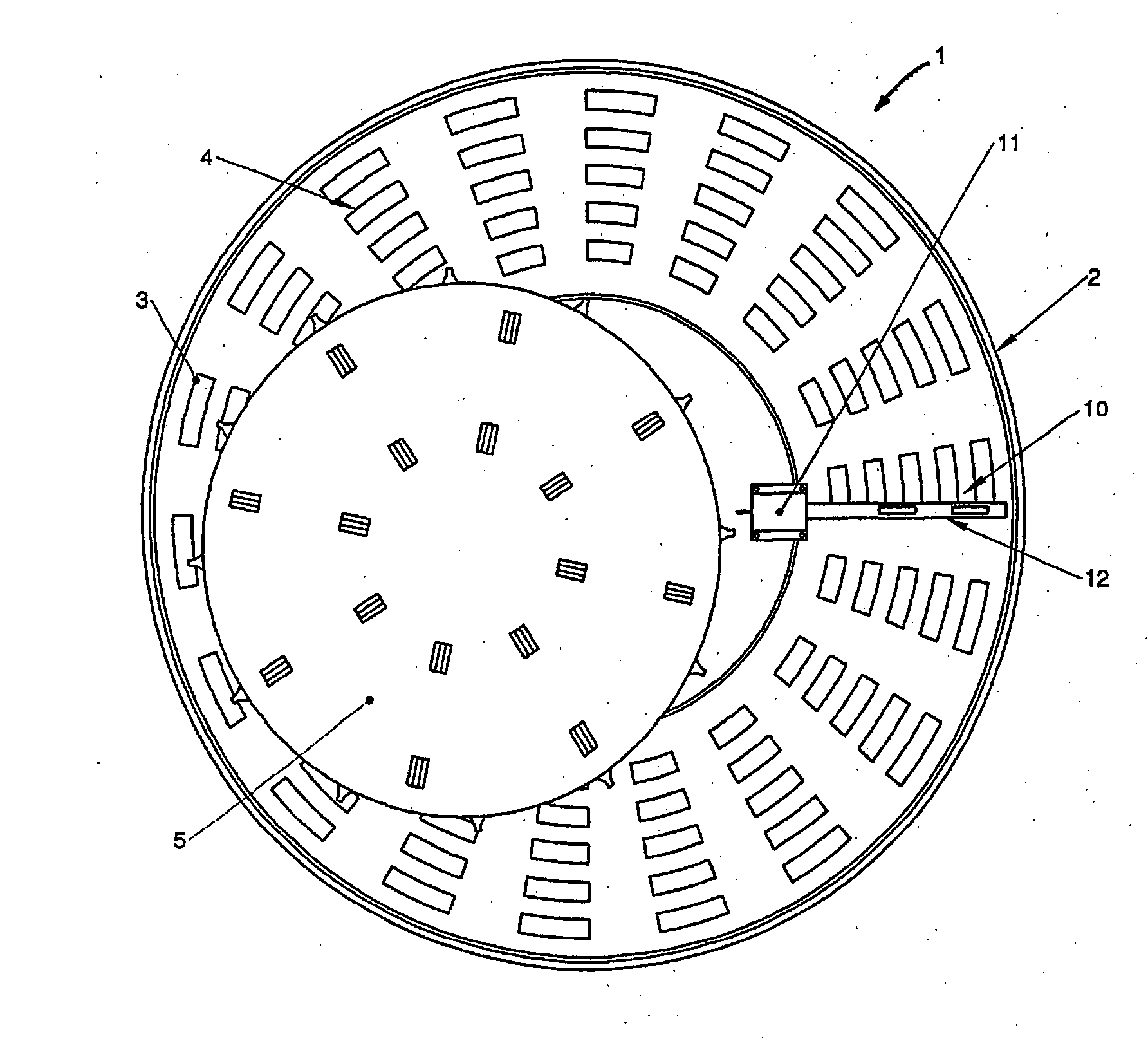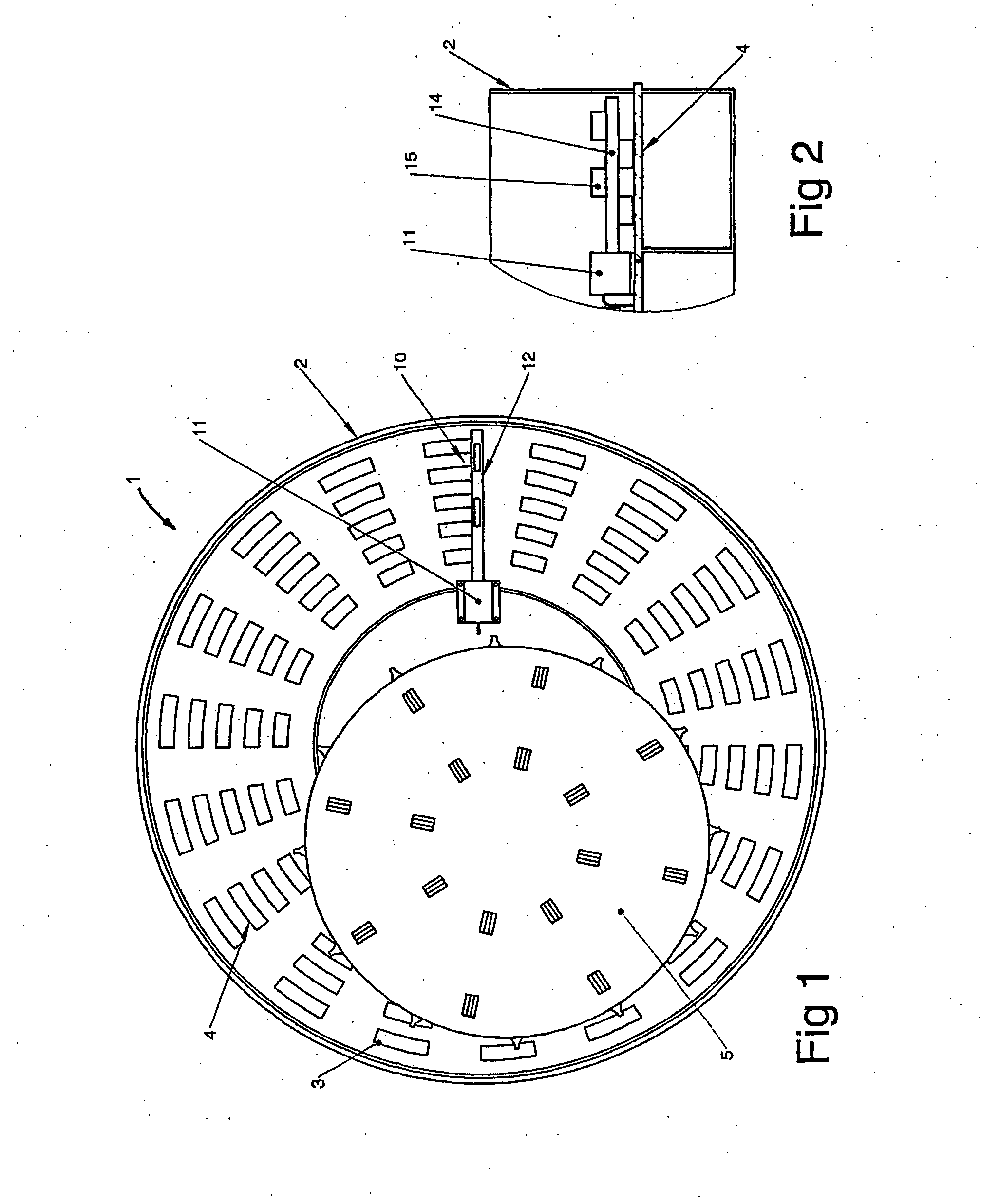Dynamic screen process for hogging apparatus
a technology of hogging apparatus and dynamic screen, which is applied in the direction of sieving, solid separation, screening, etc., can solve the problems of blockage screens, exacerbate many problems, and tyres in particular can represent problems, and achieve the effect of some flexibility in the positioning and orientation of agitators
- Summary
- Abstract
- Description
- Claims
- Application Information
AI Technical Summary
Benefits of technology
Problems solved by technology
Method used
Image
Examples
Embodiment Construction
[0099] With reference to the drawings are by way of example only there is shown in FIG. 1 tub-type hogging apparatus comprising a tub generally indicated by arrow 1 with side walls (2) bottom (3) made up of at least partially of screens (4) with apertures. The rotating disc (5) has a plurality of teeth (6) which interacts with bulk material positioned within the tub (1). The disc (5) rotates about substantially a vertical axis, and is typically offset from the centre of the tub (1).
[0100] Also provided is agitating means generally indicated by arrow (10) consisting of a motor (11) and agitating portion (12). The agitating portion (12) comprises a shaft (14) with a plurality of substantially radially directed blades (15) extending therefrom. The motor is mounted on the central platform in which rotation relative to the tub (2) occurs (whether by tub or platform rotation).
[0101] The motor (11) is typically a hydraulic motor. Its rating will depend on the size of the hogger apparatus...
PUM
 Login to View More
Login to View More Abstract
Description
Claims
Application Information
 Login to View More
Login to View More - R&D
- Intellectual Property
- Life Sciences
- Materials
- Tech Scout
- Unparalleled Data Quality
- Higher Quality Content
- 60% Fewer Hallucinations
Browse by: Latest US Patents, China's latest patents, Technical Efficacy Thesaurus, Application Domain, Technology Topic, Popular Technical Reports.
© 2025 PatSnap. All rights reserved.Legal|Privacy policy|Modern Slavery Act Transparency Statement|Sitemap|About US| Contact US: help@patsnap.com



